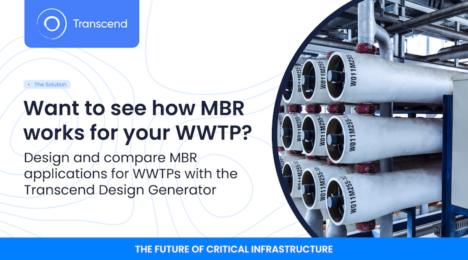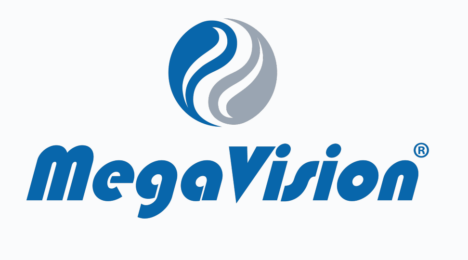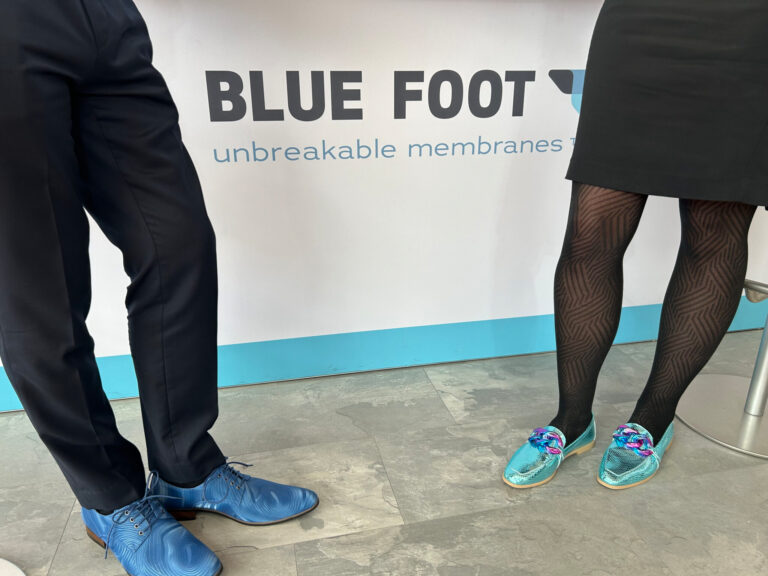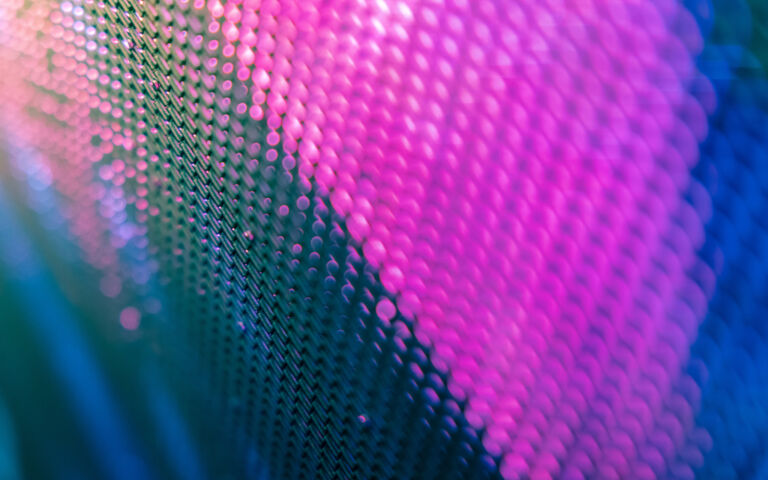Aquatech 2025: an MBR perspective

Aquatech Amsterdam, 'the world's leading trade exhibition for process, drinking and wastewater', took place from 11−14 March 2025. With 800 exhibitors and 25,000 visitors, the exhibition was a great success.
Claire and Simon Judd decided to go last minute and we're really glad we did. Simon reports on meeting old friends and new...
Amsterdam, though seemingly festooned with ongoing building and road repairs, is clean and scenic with an erudite and helpful population, a very effective transport system and many, many canals. It also possesses some interesting architecture, a wide selection of museums, a curious abundance of cheese shops and no small number of cafes with cannabis on the menu. Apart from our hotel running out of water for 8−9 hours (yes, irony is alive and well in Amsterdam), we had a very pleasant stay.
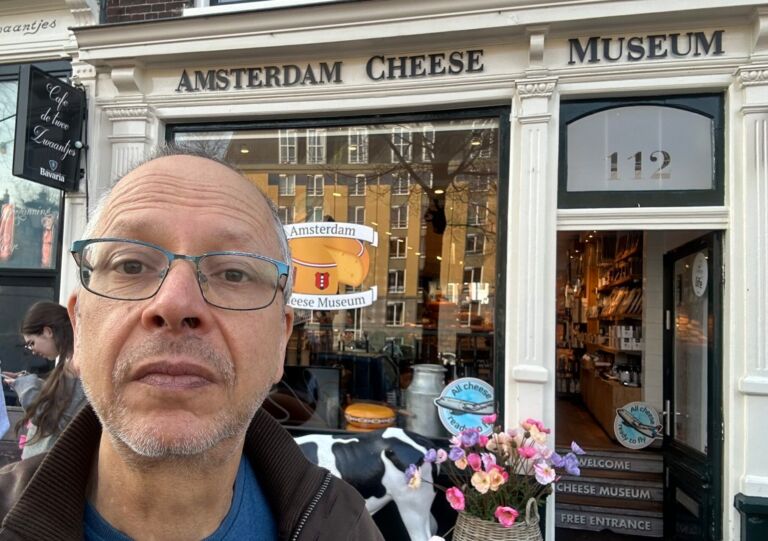
The city’s RAI is the main exhibition centre. It is perhaps no more than half the size of the Shanghai New International Exhibition Center (Aquatech China), Messe München (IFAT, Munich), the Ernest N. Morial Convention Center (WEFTEC, New Orleans) or McCormick Place (WEFTEC, Chicago), but is nonetheless big enough to accommodate the 800-or-so exhibitors. Unlike those other events, Aquatech is dedicated to water: very little on solids processing (apart from, oddly, screw presses) or gas treatment − just predominantly the wet stuff.
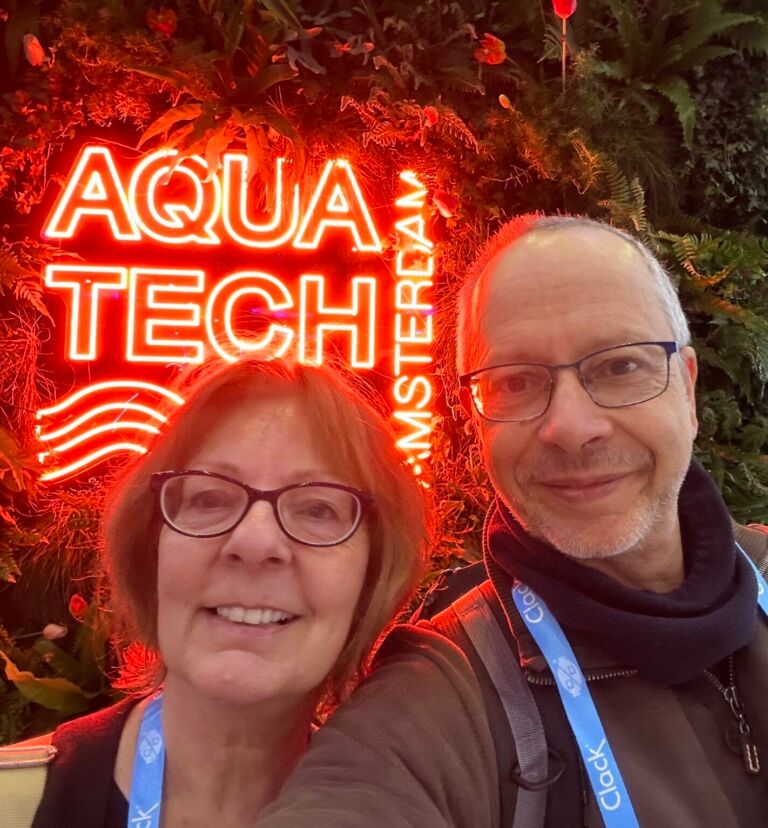
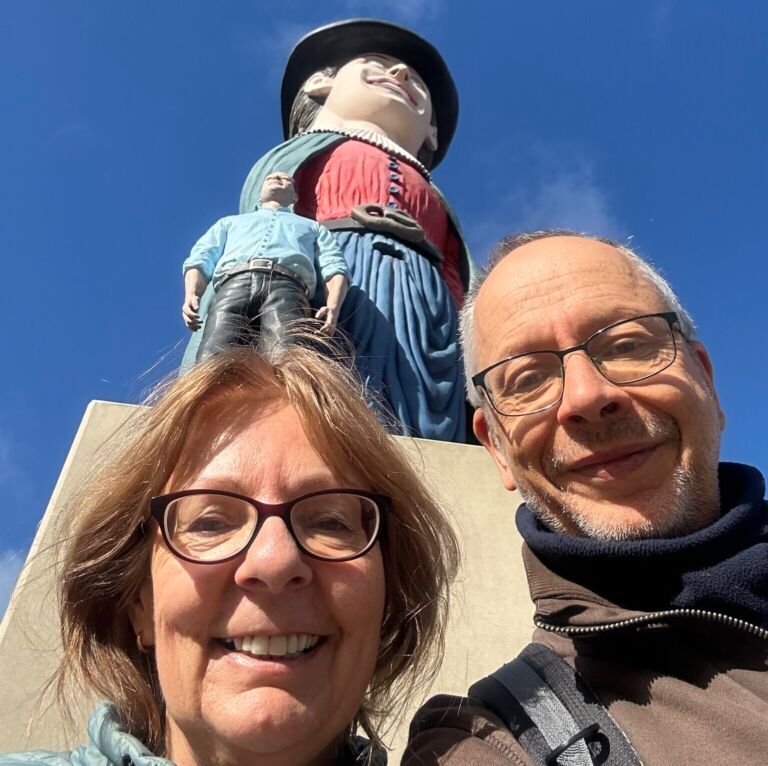
As with all trade shows, Aquatech presented the opportunity to catch up with some old acquaintances and, in particular, a few of our wonderful advertisers: specifically Julius Glöckner and Daniel Arias at CERAFILTEC, Adams Li, Jeffery Ye and Jerry Fan at Shanghai SINAP, and Kevin Chen at Shanghai SPERTA.
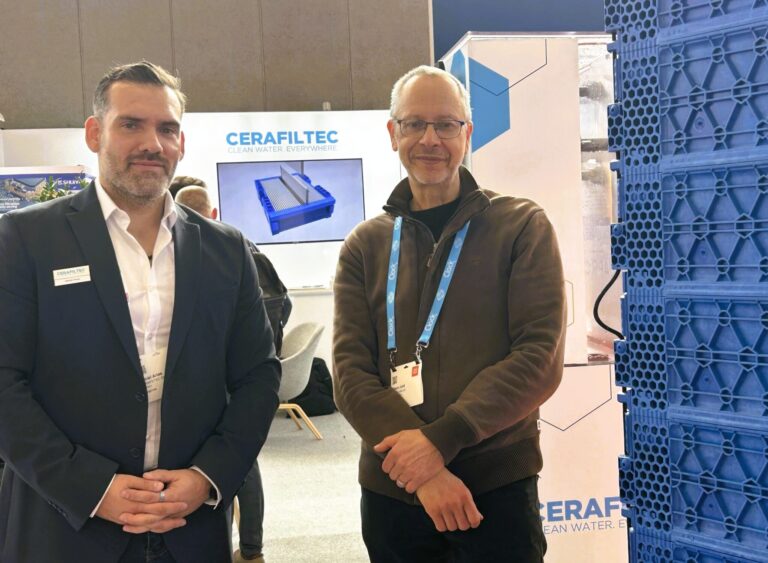
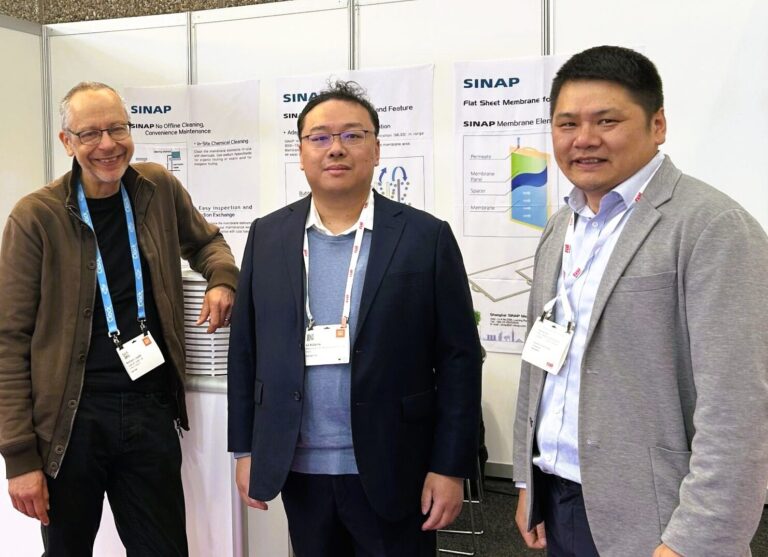
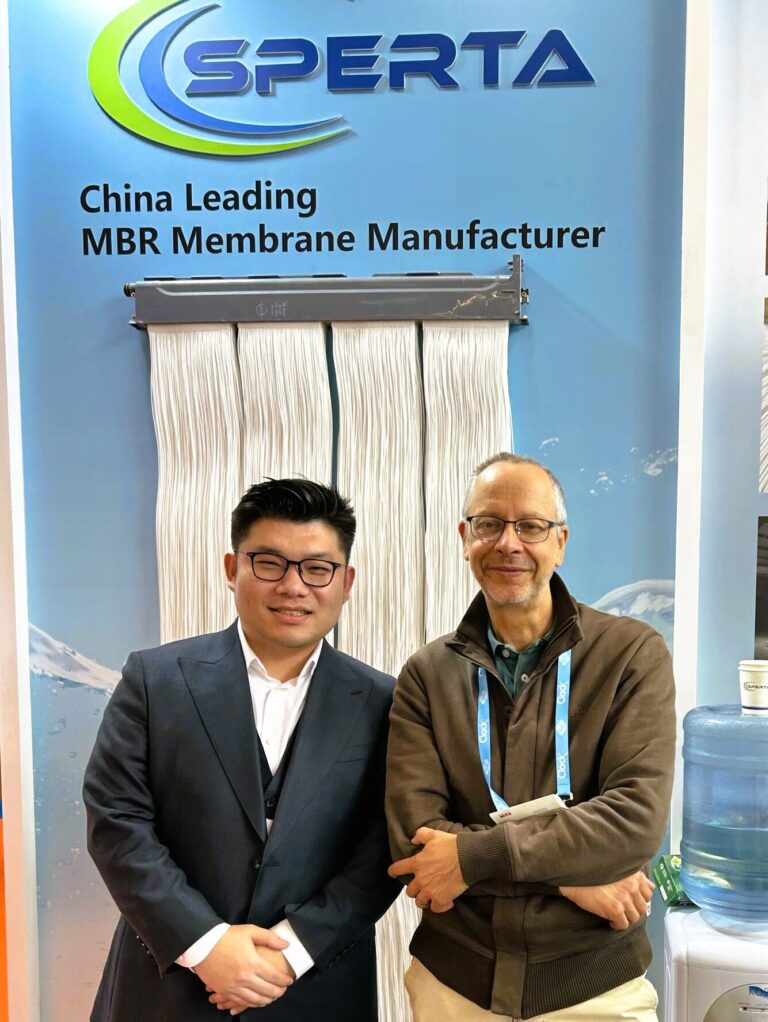
It’s always a little surprising to learn that companies you normally firmly associate with one country turn out to have a foothold in other regions of the world. Shanghai SINAP, for example, have references dating back to 2003, and now have reference installations in Europe, MENA and the US, with staff located in Boston.
Shanghai SPERTA, specialising in supplying bespoke modules for relatively small flows and integrating with existing infrastructure, have customers in at least three European countries as well as the Philippines.
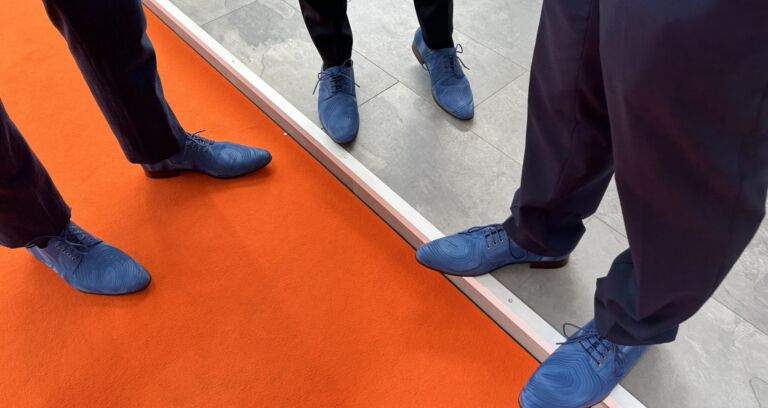
Our friends at Blue Foot Membranes - who else? Our friends at Blue Foot Membranes - who else? 
There were some nice-looking full-scale modules on display at the event. CERAFILTEC, who have just secured a contract for what will be the largest ceramic membrane-based MBR in the world, had a 16-high tower of their modules.
MANN+HUMMEL's booth was also resplendent with a gleaming full-sized BIO-CEL flat sheet (FS) module. Since it has no casing, it was possible to see the membrane sheets within.
Another German MBR FS membrane supplier, WTA UNISOL, was at the exhibition with their polyethersulphone (PES)-based MYTEX product − an unusually squat module which can be stacked up to five modules high.
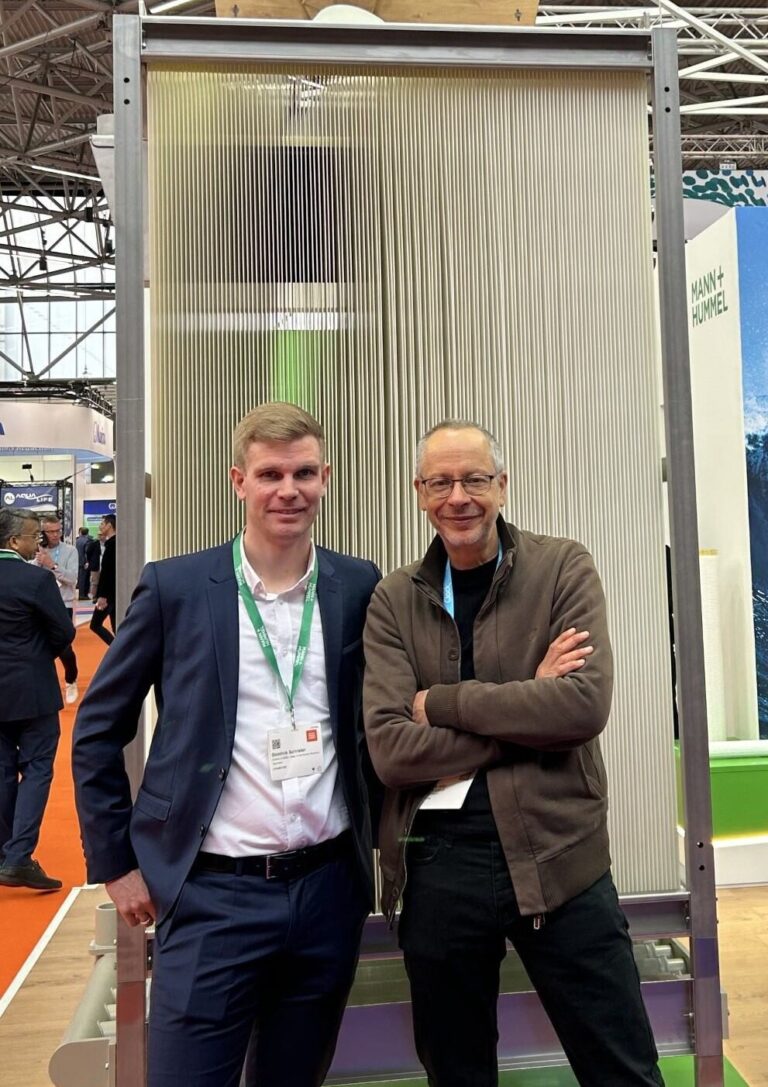
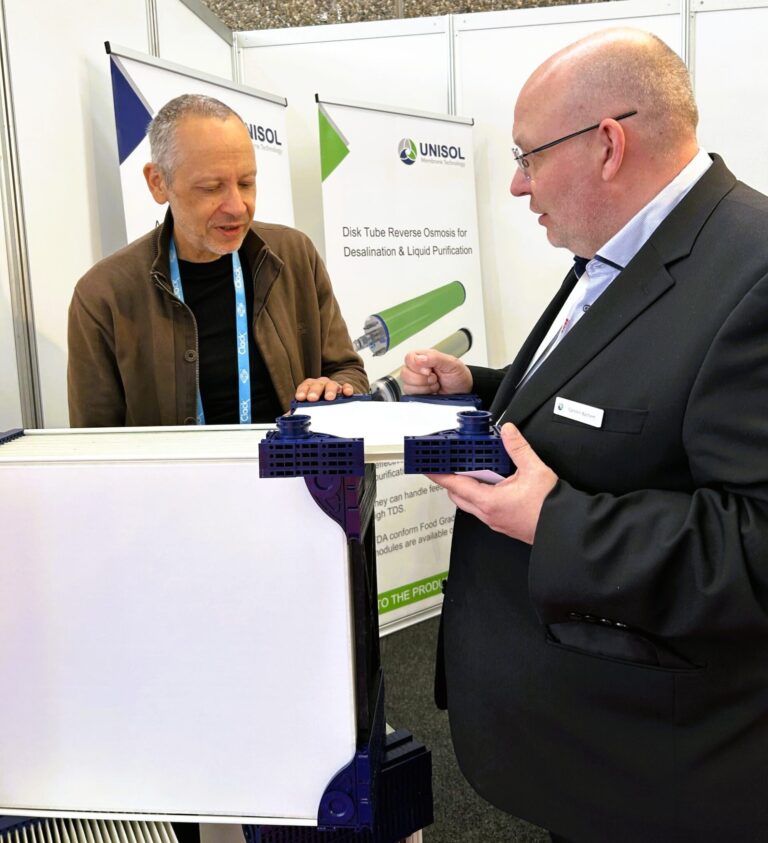
It was good to catch up with old associates Peter Aerts, Steffen Richter and the newly appointed Chief Commercial Officer Chris King, as well as the omnipresent Björn Otto, at Blue Foot Membranes. Their FS membrane, which is backflushable at 2 bar, seems to be being challenged with some seriously tough industrial effluents.
And the same is true of the Berghof multitube (MT) membrane, with Tobias Steube, Antonio Sempere and Alfredo Crespo staffing the booth. At one of their sites the membrane is being fed with >5000 mg/L COD anaerobic MBR and producing a <100 mg/L permeate − which is going some.
Another major MT module supplier, Pentair from the US, has implemented their 3 mm internal diameter PES tubular membrane module for air-lift sidestream MBRs in their Airlift Megablock solution.
Of the other tubular membrane suppliers, PCI Membranes, a UK company with a long-established novel tubular nanofiltration and reverse osmosis technology, were exhibiting both their MT and HF ultrafiltration membrane products − both of which have been used in MBRs.

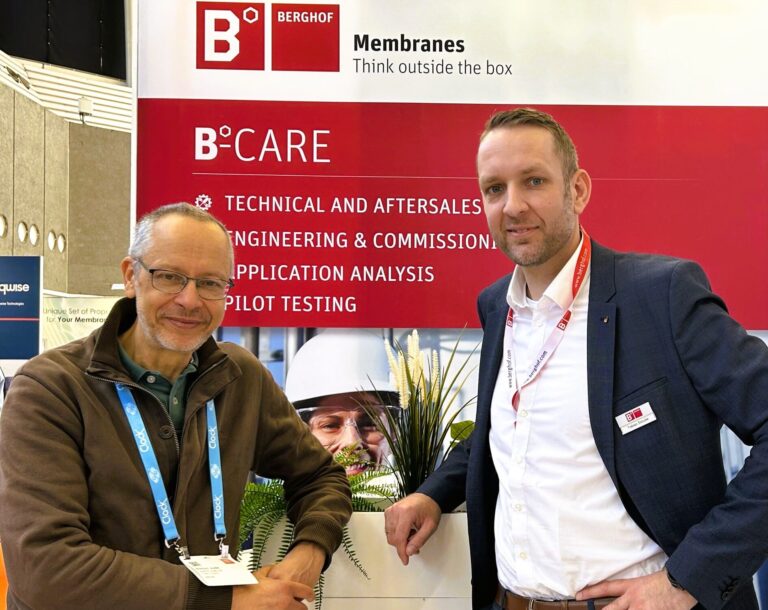

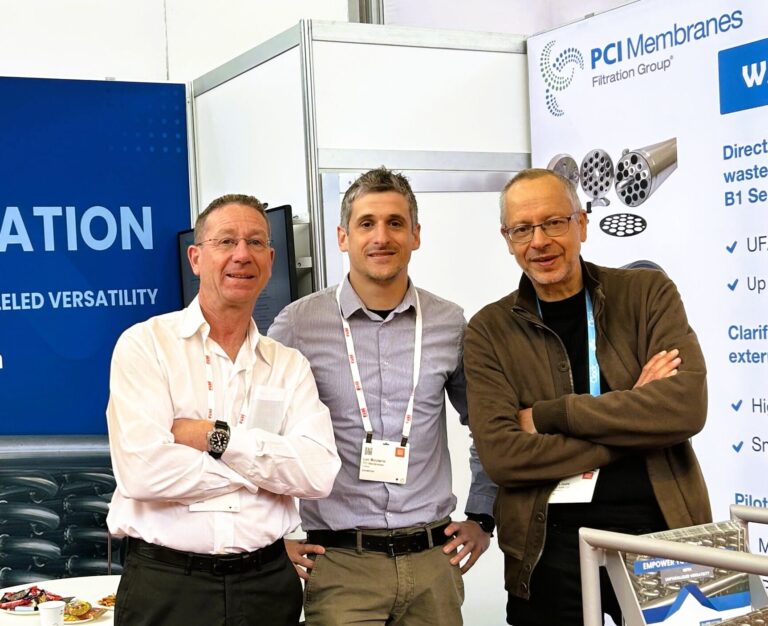
China was well represented at the exhibition, and Chinese companies (some of whom exhibited in the Shanghai expo a few months back) have had some success in the replacement market. Litree, a well-established brand in China, have had their hollow fibre (HF) product installed at the landmark sites of the Nordkanal municipal wastewater treatment works in Germany and the Porto Marghera oil refinery in Italy, the latter for more than nine years.
Another Chinese HF membrane supplier in attendance, Ningbo Shuiyi, has been established in China for around 20 years. And from Korea and Japan there were LG and Toray Membrane respectively. Toray is another long-established supplier, having first entered the market with its original FS MBR membrane some 20 years ago and with its NHP composite membrane introduced in 2017.
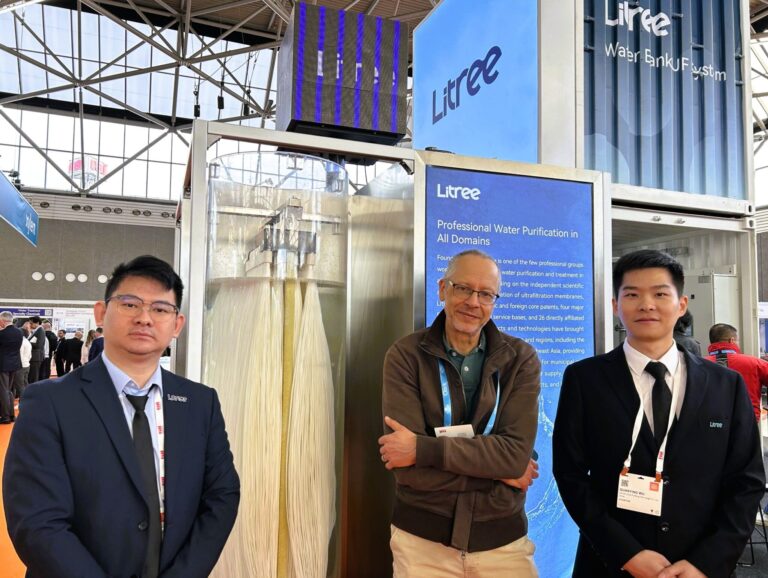
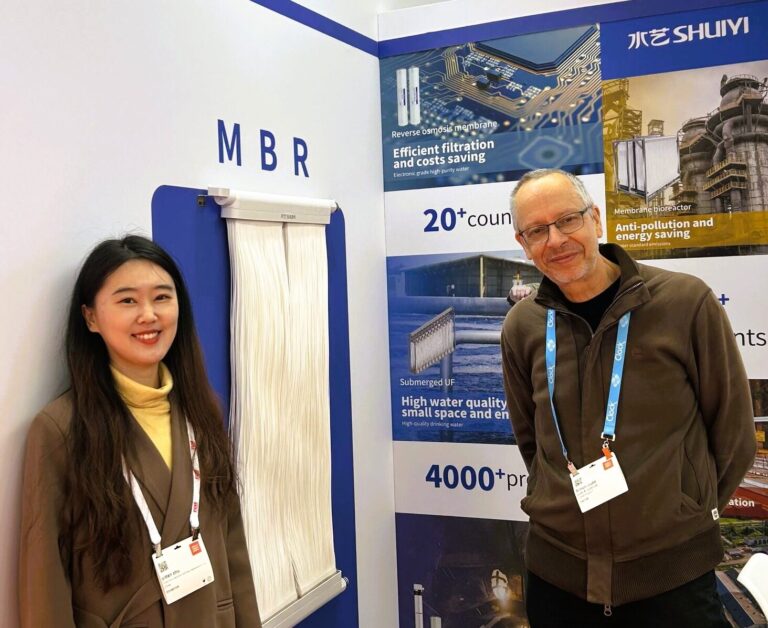
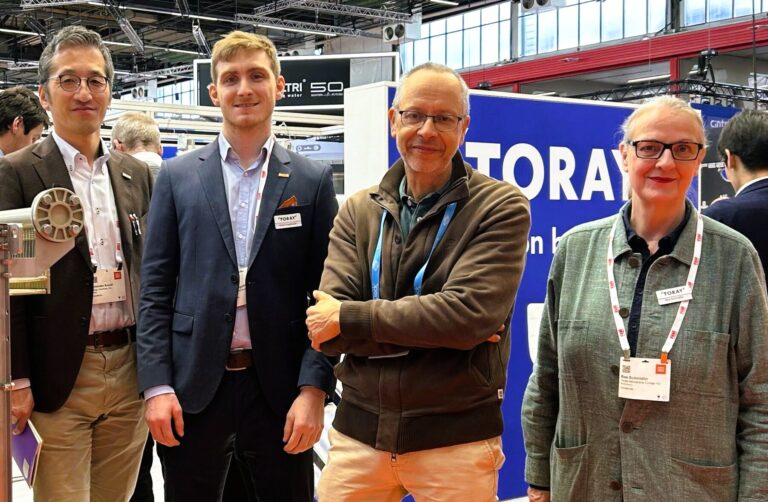
Interestingly, QUA − a company I’d previously assumed to be Chinese − actually has its HQ in Pennsylvania and its main manufacturing operations in Pune, India. Another US company, DuPont, had a booth proudly displaying both its MBR (Mempulse) and MABR (OxyMem) modules − evidently the only MABR product at the show.

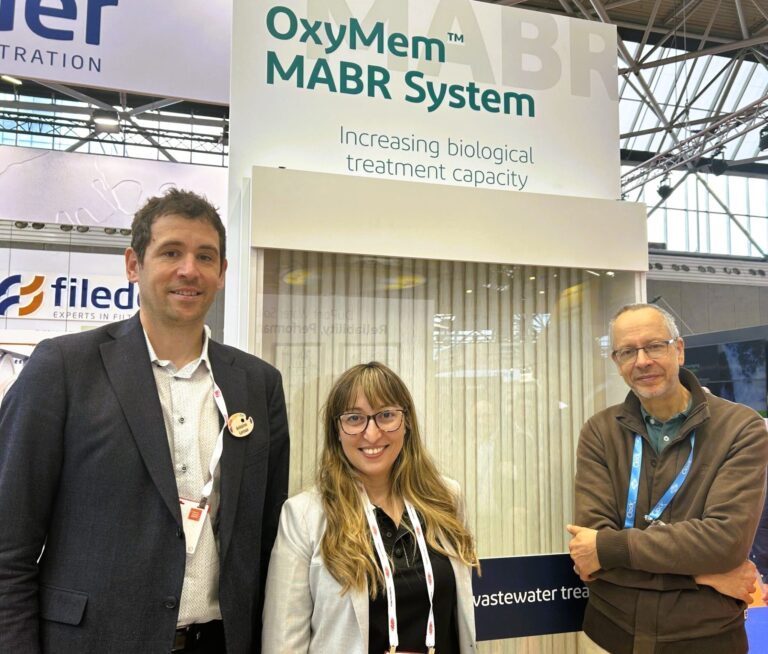
There were also some more unusual products from East Asia. The HifilM INC product from Korea remains, to the best of my knowledge, the only mechanically-moved, non air-scoured immersed HF membrane. They now have 10 commercial references installed over the past 6 years.
HUFMEM, headquartered in Shanghai and led by Jessica Pan, offer a graphene-impregnated PVDF FS membrane which has been implemented in China within the past two years.
Membrane Solutions, also based in Shanghai and with the dynamic Helen Lin at the helm, showcased the LifeBox, a reverse osmosis module powered by a hand crank. It looked intriguing, though presumably would have required a bit of muscle for full-on seawater desalination. And it might have served us well the evening before when contractors had burst a water main at our hotel.
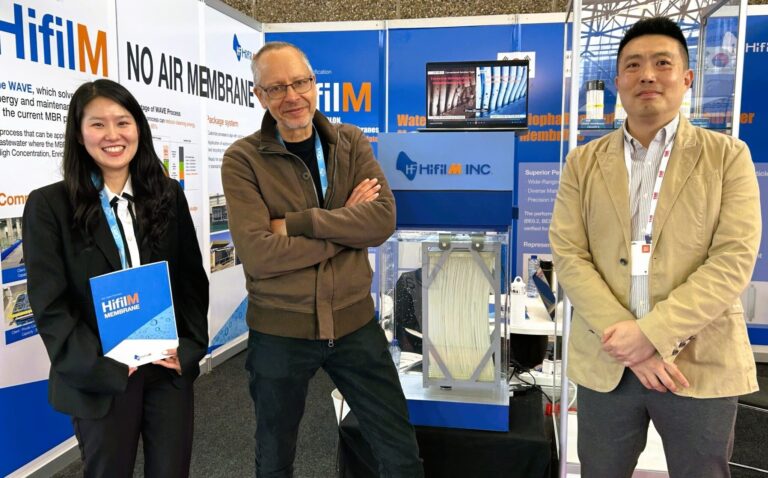
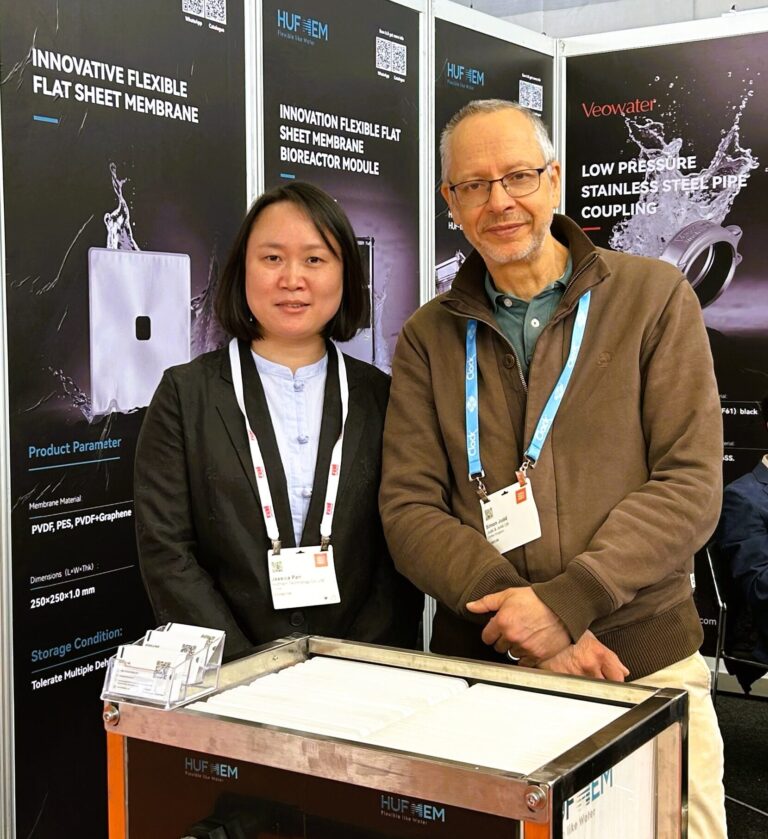
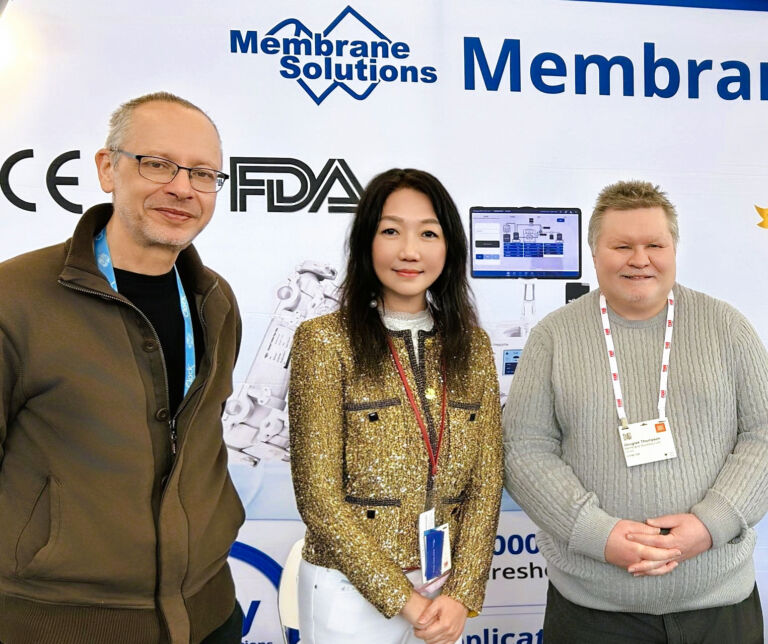
So, was it worth attending? A resounding yes. It’s always an education talking to the technical people staffing the booths at trade shows. And, in Aquatech, the organisers have chosen a great venue in a wonderful city.
Amsterdam is a nice place to visit, but also one where you might even want to live. Particularly if you’re a scaffolder.



